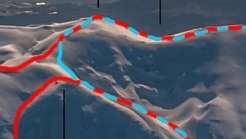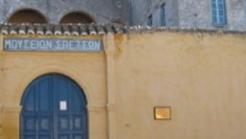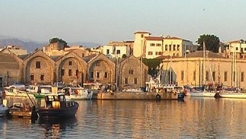

Greece
1600 B.C. Spring festival Guests proceed to the theatre of the palace to honour the Great Mother, Goddess Nature. The guide informs the guests about the proceedings. Everybody is excited about what will follow. The high-priestess enters the stage. She is burning incense from aromatic herbs of the
1600 B.C. Spring festival
Guests proceed to the theatre of the palace to honour the Great Mother, Goddess Nature.
The guide informs the guests about the proceedings. Every body is excited about what will follow.
The high-priestess enters the stage. She is burning incense from aromatic herbs of the Cretan land. Offerings are given to the personification of Goddess Nature, the olive tree (treeworship).
offerings follow, gifts of the Cretan Earth. Carobes, nuts, pines, fruit etc.
The Minoan ladies dance to hnour the Goddess along with the men. Their union, a symbol og equality and love in honour of the Great Mother.
The games will begin. Strength, stamina and intelligence will surface through the bull games, surviving the fatal risks of the game with the sacred bull.
The high priestess embraces the Minotaur in a ritual dance.


Pierra Creta southernmost ski mountaineering event. Pierra Creta is a ski mountaineering race held in the mountains of Crete. It was organized for first time in March 2014, and in 2015 as a team race with great success. After two successful consecutive editions, “Pierra Creta” is a bi-annual event!


The archaeological collections was recently enriched with the generous offer of coins and numerous findings of various periods, that Adonis Kyrou had collected from all around the island, as well as from other places. A significant number of pictures and various ecclesiastical exhibits also comes from collection, and offers.


How can someone describe Chania? The narrow streets of the old town, its’ center, its’ quarters, the smell of the multicultureness throughout the centuries. Noone can conquer it completely.
1039 Ε 6061 01515 00